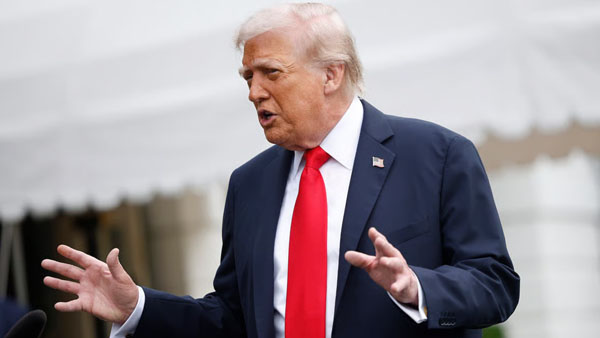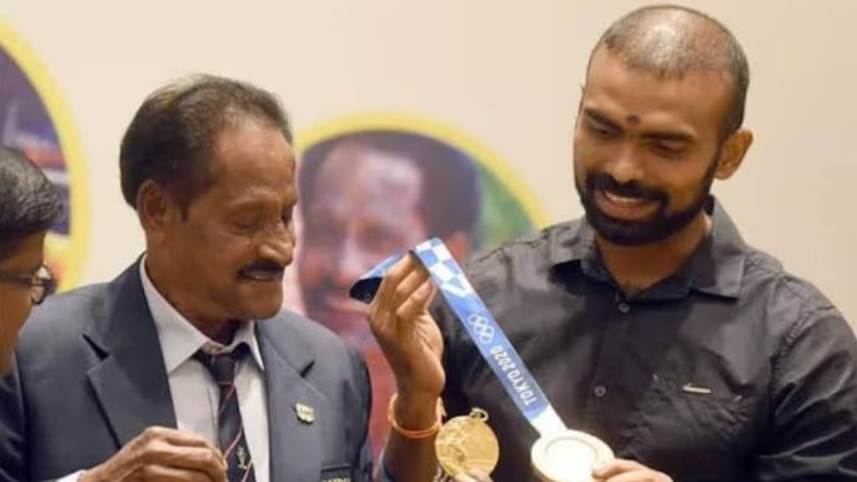By Satyabrat Borah
In the shadowed corridors of Middle Eastern diplomacy, where promises flicker like distant stars against a perpetual night, the Gaza ceasefire of October 2025 emerged as a fragile artifact of American ambition and Israeli intransigence. Brokered by a resurgent Donald Trump, the agreement arrived amid the rubble of two years of unrelenting conflict, a war that had scarred the collective psyche of Israelis still haunted by the horrors of October 2023 and left Gaza in profound devastation. Trump, fresh from his electoral triumph, unveiled his plan during a White House press conference flanked by Israeli Prime Minister Benjamin Netanyahu. The document painted a vision of phased de-escalation: an initial halt to hostilities, the release of hostages and prisoners, partial Israeli withdrawals behind a designated line, and the faint outline of reconstruction under international oversight. Arab and Muslim nations, from Qatar to Saudi Arabia, lent their voices in cautious endorsement, hoping to stem the hemorrhage of regional instability. Yet, from its inception, this truce bore the hallmarks of illusion, a diplomatic sleight of hand that masked deeper fissures and unyielding agendas.
The plan’s first phase began in early October, with Israeli forces pulling back from urban centers in Gaza, allowing a trickle of displaced Palestinians to return northward. Aid convoys, long stalled at checkpoints, began inching forward, and the United Nations reported the establishment of food distribution centers and makeshift clinics. For a fleeting moment, the airwaves hummed with tentative optimism. Trump touted it as his masterstroke, a testament to peace through strength, while Netanyahu, in a televised address, vowed that Israeli troops would linger to ensure Hamas’s disarmament. Hamas, for its part, framed acceptance as a tactical pause, a breath to regroup amid the devastation. Bodies of hostages were exchanged for Palestinian detainees, and the International Committee of the Red Cross shuttled between Rafah and Gaza City, verifying compliance under the glare of global scrutiny. American troops embedded themselves in a coordination center near the border, a nod to Washington’s commitment to enforcement. Envoys shuttled between Jerusalem and Doha, whispering assurances and veiled threats. It felt, to the optimists, like the dawn of something sustainable.
But beneath this veneer of progress, cracks appeared almost immediately. Israeli airstrikes persisted in limited operations, killing civilians in the first day as they ventured homeward. Gaza’s health ministry reported more civilian deaths from troops firing on suspected threats near the designated line. Aid inflows, promised in generous volume, remained choked by Israeli inspections that deemed ordinary shipments suspicious. Netanyahu’s coalition partners, ultranationalists, railed against any concession, branding the truce a betrayal of the hostages’ memory. Public protests in Tel Aviv swelled, families of captives accusing the prime minister of prioritizing political survival over human lives. On social media, the discourse erupted in raw fury: one user lamented that this ceasefire was a pause, not peace, while another decried it as a smokescreen for repositioning. Hamas bristled at the disarmament clause lurking in the next phase, viewing it as existential erasure. Their leadership’s ambiguous rhetoric hinted at backroom machinations, a calculated ambiguity that fueled suspicions of impending rupture.
By mid-October, the truce’s hollowness echoed louder. Israeli strikes in response to the alleged killing of soldiers by militants claimed many Palestinian lives, including women foraging in Nuseirat. Netanyahu justified the barrage as a forceful response to violations, pinning blame on Hamas for staging discoveries of remains. Gaza’s civil defense agency decried the attacks as reminiscent of past escalations, with families fleeing Khan Younis in panic, markets emptying as whispers of collapse spread. Trump, aboard Air Force One en route to Asia, defended the reprisals, insisting Israel had the right to hit back if attacked, even as his administration dispatched more officials to rein in the fallout. Aid resumed the next day under pressure, but the damage lingered: children promised educational spaces remained in limbo, their futures buried under unfulfilled pledges. The United Nations Human Rights Office documented a pattern of continued civilian killings by Israeli forces, underscoring how the ceasefire’s borders blurred into de facto occupation.
Netanyahu navigated this minefield with a blend of defiance and deference. Facing corruption trials that threatened his grip on power, he leaned into the war’s narrative as his lifeline, portraying himself as the unyielding guardian against existential peril. His cabinet sessions bristled with assertions of sovereignty: Israel decides which foreign troops secure Gaza, he declared, rebuffing proposals for a multinational force that included Arab contingents. Yet, whispers from Jerusalem revealed a man cornered, caught between Trump’s micromanagement and his far-right allies’ demands for total victory. The prime minister froze appointments to the ceasefire headquarters if envoys showed ties to rivals, a petty maneuver to consolidate control. Publicly, he echoed Trump’s goals of disarming Hamas and demilitarizing Gaza, but privately, aides admitted the strikes served dual purposes: punishing perceived breaches and stoking domestic fervor to delay elections. Critics like opposition leader Yair Lapid lambasted him for plunging Israel into a profound political crisis, accusing him of sabotaging earlier deals that might have freed captives sooner.
Hamas, fragmented yet resilient, played its hand with equal cunning. Accused of handing over wrong remains, the group countered with denials and delays, postponing further handovers amid the chaos. Their armed wing claimed no role in the Rafah firefight that killed an Israeli soldier, attributing it to rogue elements or Israeli provocations. A senior official fired back: Netanyahu is deliberately violating the truce, pinning blame on the resistance. Internally, Hamas cracked down on rival clans testing its authority, a violent consolidation that belied the truce’s supposed calm. The group’s refusal to entertain disarmament outright stemmed from a deeper calculus: in a landscape of imposed realities, yielding weapons meant surrendering the only leverage against erasure. As one analyst noted on social media, every truce is just buying time: Hamas regroups, Israel repositions, and civilians pay the price.
The crescendo arrived when Netanyahu’s office announced immediate, powerful strikes across Gaza, shattering the ceasefire’s already tattered facade. Israeli warplanes roared over Gaza City, Khan Younis, and Deir al-Balah, unleashing a barrage that health officials described as devastating, with many dead by dawn, including children. Rescuers clawed through rubble in Nuseirat, pulling limp forms from homes reduced to craters, while smoke choked the October sky. The trigger was a cocktail of grievances: disputed remains, the Rafah shooting, and drone footage purporting to show Hamas staging recoveries. Netanyahu framed it as righteous retribution, a clear violation demanding a response, but Gaza’s voices drowned in grief. Palestinian academic Ramy Abdu tweeted that Israel is a beast that cannot be satisfied with blood, sharing images of siblings vaporized in their tent. Hamas retaliated by halting all exchanges, vowing to pressure mediators for Israeli restraint. Trump insisted the truce held, calling incidents little skirmishes, but his words rang hollow as credibility frayed. Reports from the ground painted a grimmer portrait: aid blocked anew, civilians slain in preliminary waves, and the designated line redrawn in blood.
This eruption laid bare the truce’s inherent meaninglessness, a parchment promise eroded by mutual distrust and asymmetric power. For Palestinians, it offered no true reprieve: no unfettered return to homes, no end to the blockade’s stranglehold, no justice for the wounded or the thousands entombed under debris. Reconstruction talks, meant to channel funds from Gulf states, stalled in the crossfire, leaving Gaza’s population to navigate a humanitarian abyss. Israeli settlers eyed the chaos as opportunity, with West Bank encroachments surging, a silent parallel front in the land grab. Globally, the spectacle eroded faith in diplomacy: Britain’s Keir Starmer hailed the initial deal, only to watch it unravel, while Indonesia and Colombia decried the strikes as war crimes. On social media, the sentiment crystallized in viral laments: if this is ceasefire, what is peace? The final solution? Echoing a weary consensus that Trump’s blueprint was less plan than ploy, a veneer for indefinite limbo.
The Gaza ceasefire exposed the rot in Netanyahu’s leadership and the perils of Trump’s transactional gaze. The prime minister, architect of the war’s prolongation, wielded the truce as a weapon, striking to appease hawks and evade accountability. His defiance of pleas for restraint underscored a leader unbound by alliance, prioritizing legacy over lives. Trump, for all his bluster, found his vaunted deal unraveling, a blow to the aspirations that once dangled like bait. Yet, in this meaningless interlude, glimmers of resistance persisted: Palestinian families defying orders to trek homeward, Hamas’s unyielding spine against disarmament, and a global chorus amplifying the dead. As the end of October dawned, with the ceasefire notionally resumed after the carnage, the question lingered like shrapnel in flesh. Could this cycle yield to equity, or would it spiral into the hard way Netanyahu so casually invoked? In Gaza’s scarred embrace, history whispered its grim reply: truces may pause the storm, but without reckoning, they merely prelude the next deluge. The dead demanded more than words; they cried for a peace forged in justice, not the ashes of expedience.




